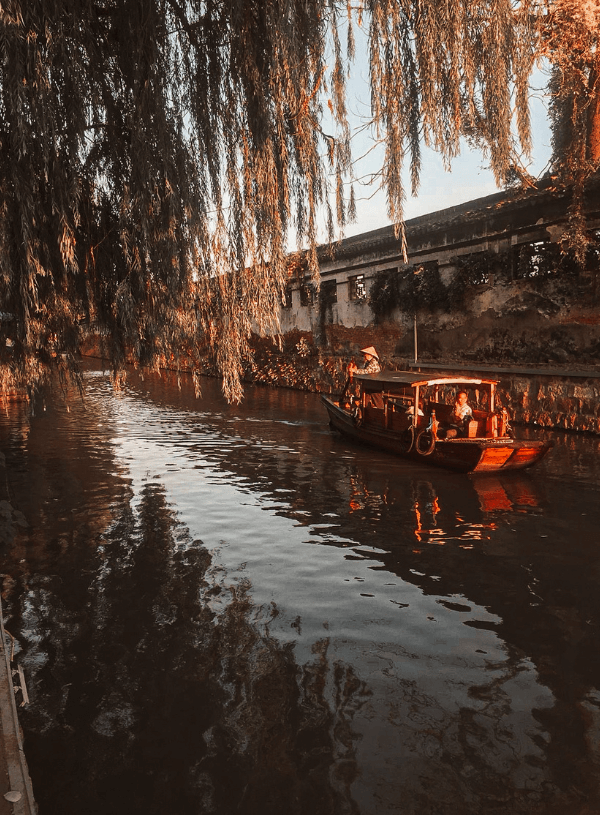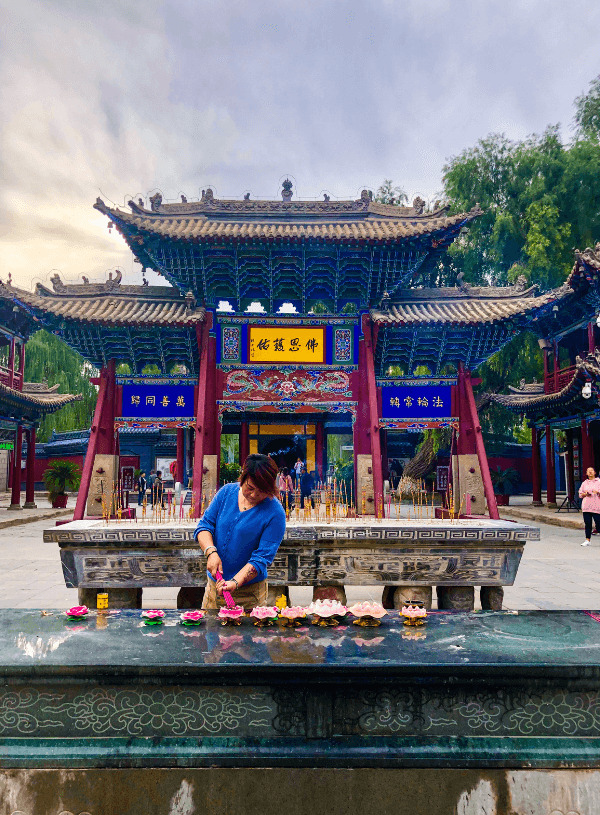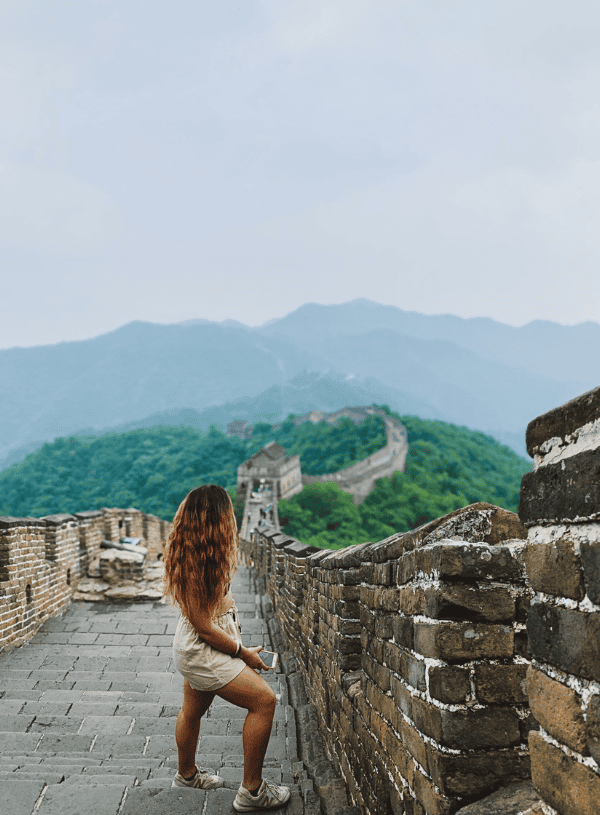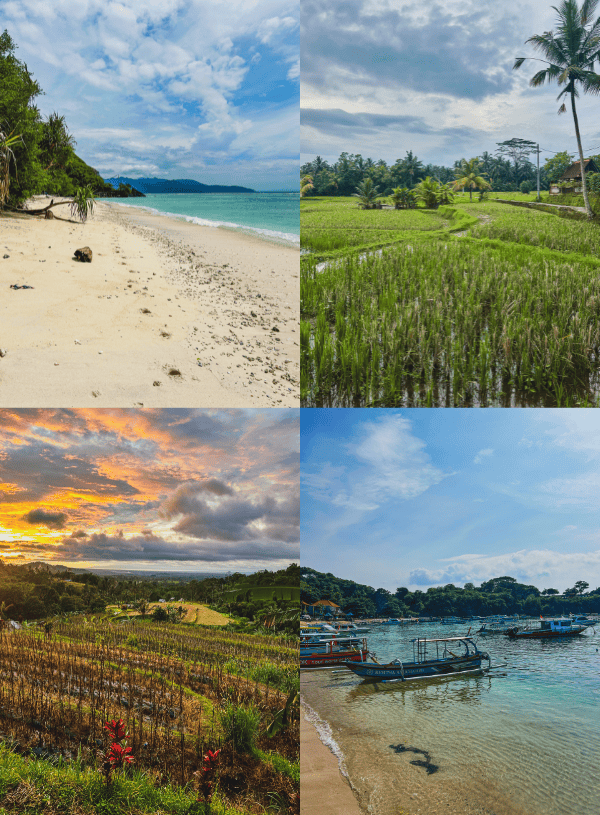Planning your first trip to Chengdu? I’m so jealous!
I visited this city for the first time back in 2019, and I still remember how it felt—Chengdu has the most laid-back vibe I’ve ever experienced in China. Here, life flows slower, people take their time, and you really get to feel and see how the local life unfolds.
Chengdu is the capital of one of China’s richest provinces—home to wild nature, UNESCO-protected wonders, and of course… the food! It’s definitely a place worth experiencing!
In this travel guide, I’ll show you the best things to do in and around Chengdu, where to stay, how to get around, what to eat, and more. At the end of the post, you’ll find a 3-day Chengdu itinerary that brings together all the highlights—pandas, buddhas, and a few hidden corners too.
This article may contain affiliate links. This means that if you purchase through one of the links, I may be paid a small commission at no extra cost to you. Thank you for supporting the blog, allowing me to share meaningful travel experiences with you.
Don’t have time now?📌 Pin it for later
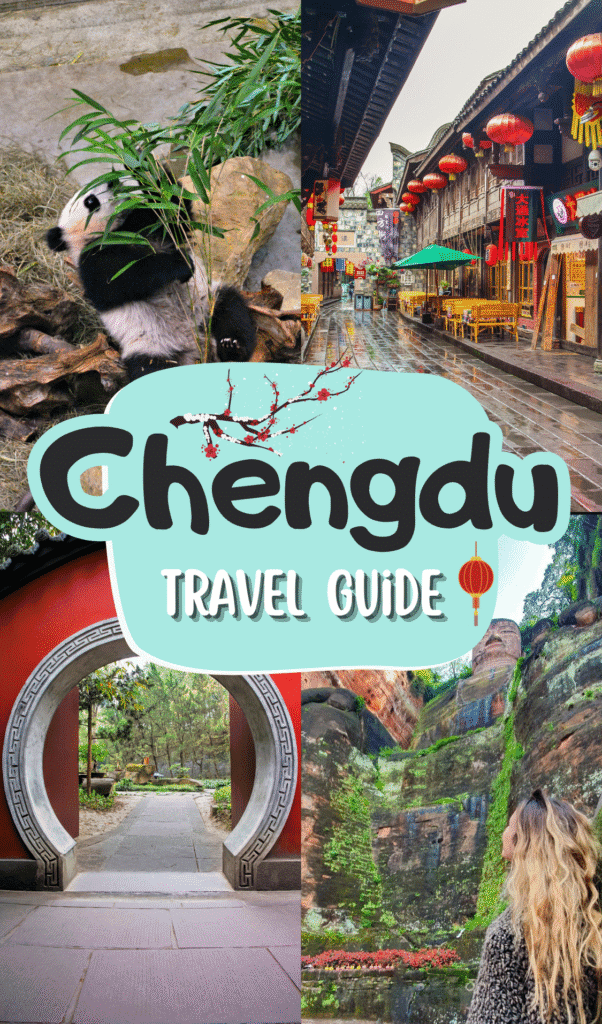
Is Chengdu Worth Visiting?
Of course it is! Chengdu totally surprised me, I didn’t expect such a mix of energy and chill vibes. While cities like Shanghai feel… intense, life in Chengdu flows at a different pace—people sit for hours in teahouses (and they get their ears cleaned often, it’s a tradition here!) play cards in the parks, and somehow just take their time.
It’s no coincidence that many expats in China choose to live here—it’s vibrant, but much more livable. The kind of Chinese vibe made of busy narrow alleyways and red lanterns hanging above—just like you’d imagine.

As the capital of Sichuan, Chengdu is also packed with reasons to visit: a few historical sights (nothing too famous), the super-famous spicy food (yes, hotpot is a must!), the colorful Sichuan Opera, and of course, the pandas.
You can visit the Chengdu Research Base of Giant Panda Breeding with just a short ride from the city center. And if you’re into nature, you’re in the right place—Mount Qingcheng, Mount Emei, and even the stunning Jiuzhaigou Valley aren’t far.
So, with its red lanterns, spicy flavors, and peaceful pace, Chengdu adds that real “China” feeling to your itinerary.
Planning Your Trip to Chengdu
1. Key Things to Know
2. Best Time To Visit Chengdu
Chengdu is located in Sichuan Province, in the southwest of China. The best times to visit are early fall (September and October) and spring (March to May), when the weather is mild and ideal for exploring.
Just be sure to avoid the first week of October (from the 1st to the 7th), as it is a national holiday in China, and there will be crowds everywhere.
I visited in November, and while it was cool enough for a jumper, the skies weren’t the clearest. Summer in Chengdu can get hot and humid, and winters are grey and a bit chilly, though still totally doable if you don’t mind bringing a jacket.
That said, I personally think early autumn is the perfect time to be in Chengdu—the city feels alive but not chaotic, and somehow, the hotpot tastes even better when the air gets cooler.
3. How Many Days in Chengdu
I believe two or three days are ideal for enjoying what Chengdu has to offer. Two days work well if you like a more packed itinerary, while three days are your fit if you enjoy aimless wandering and taking your time.
Three days also give you enough time to plan a day trip, like visiting the Leshan Giant Buddha, which is just about an hour away by train. That said, if you’re thinking about hiking Mount Emei, you’ll need at least two extra days just for that trip.
4. How To Get To Chengdu
Landing at Chengdu Airport
If Chengdu isn’t your first stop in China, the fastest way to get there is usually a direct domestic flight from major cities like Beijing or Shanghai.
Chengdu is well-connected with two international airports: Shuangliu International Airport (CTU) and Tianfu International Airport (TFU).
Shuangliu is the older and more established airport, handling most domestic flights. Tianfu, on the other hand, is newer and was designed to take over a large share of Chengdu’s international traffic, so if you’re flying in from abroad, there’s a good chance you’ll land there.
Getting From The Airport to Your Accommodation
As soon as you land and head for the exit, you’ll be approached by well-dressed guys offering you a “ride”—just say no.
Instead, look for the official taxi signs near the exit and follow them. Have your hotel or guesthouse address printed (in Chinese characters) or clearly written on a piece of paper, and show it to the driver. Before you pull away, make sure the meter is on.
You can expect to pay between ¥100 and ¥200 for a ride that takes about an hour to an hour and a half.
Arriving By High-Speed Train
Another convenient way to reach Chengdu is by high-speed train, especially from cities like Xi’an or Chongqing. The ride only takes a few hours.
However, I wouldn’t really recommend taking the train from Beijing or Shanghai, as the journey can take around ten hours—flying is definitely the better option in that case.
If you do take the train, you’ll most likely arrive at Chengdu East Railway Station, which is located just outside the city center. To book all your high-speed train tickets, I recommend using Trip.com. It’s easy to use, available in English, and works well with foreign cards.
Getting From The Station to Your Accommodation
If you don’t want to take a taxi from the train station, you can easily reach Chengdu city center by subway, depending on where your accommodation is. If you’re staying near People’s Park or Tianfu Square—two of the best areas to stay in Chengdu—you can take Line 2 and get off at the corresponding station.
5. How to Get Around in Chengdu
Subway
The subway in Chengdu is very efficient, with 15 lines connecting the city center to the suburbs. It’s a great way to get around, although you might still need a taxi to reach some sights, like the Panda Research Base.
To buy your ticket, just head to any subway station and use the ticket vending machines, which have an English interface. If you’re not sure how much the ride will cost, you can check the fare using the Metroman app or even directly on Apple Maps when planning your route. You can pay with cash or Alipay.
If you don’t want to waste time buying tickets for every ride (even though the machines are usually free), you can get a Tianfutong Card. It’s a rechargeable card that works on both the subway and buses. You can buy it at any subway or bus station.
Taxis
Taxis are a great option if you’re in a rush or don’t feel like dragging your luggage through subway stations. You’ll notice they’re also cheaper in Chengdu—the starting fare is usually lower than in cities like Shanghai.
As always, make sure to hop into a licensed taxi, check that the meter is on, and have your destination written in Chinese to show the driver. Try to avoid hailing taxis in busy areas, as it can be harder to find one.
Most taxis accept Alipay and WeChat, but if you’re paying with cash, don’t expect them to have much change. If you want to avoid the language barrier altogether, you can use the DIDI function on Alipay. You’ll pay in advance and not need to communicate your destination.
6. Where to Stay in Chengdu
For a 2–3 day stay, I’d definitely recommend staying downtown, close to the main sights. That way, you can soak in the vibe of the city—even just stepping out of your hotel and wandering aimlessly is so enjoyable.
When I visited, we stayed at a hostel near People’s Park, and I loved the location. As you can see from the map below, it’s super close to major spots like Kuanzhai Alley, the Sichuan Opera, and the Wuhou Shrine. Plus, it’s so easy to stroll around and stumble upon restaurants and street food without even trying.
Tianfu Square is another great location—it’s not far from People’s Park and is well connected by subway. The area is so lively, with shopping malls, cafés, and plenty of places to eat, so you’ll always find something to do nearby.
7. Hotels in Chengdu
Below are some hotels where my friends and I have stayed in Chengdu:
Holiday Inn Chengdu – Tianfu Square: My friends, who just visited China in May 2025, stayed here and had a great experience. The staff speak English and were really helpful. The breakfast is fantastic, with plenty of international options, and the rooms are modern, cozy, and clean.
Wenjun Courtyard Hotel: If you’re looking for a more local vibe, this hotel is it. Its façade, which looks like a traditional Chinese palace, is stunning. Despite the traditional feel, the staff speaks English and can help you with any arrangements you might need.
Chengdu Local Tea Hostel: This hostel has one of the best locations—close to both the People’s Park area and Taikoo Li, the popular shopping and commercial district. The staff speaks English and even organizes mountain tours and trips to Tibet, making it a great option if you’re a solo traveler.
8. What to Eat in Chengdu
Food is such a huge part of life in Chengdu. Even though I’m not the biggest fan of super spicy dishes, I totally get the hype of Chengdu local flavors. While you’ll find all kinds of Chinese food in the city, there are a few classic Chengdu dishes that you absolutely have to try (the ones I love).
Hotpot: First and foremost, hotpot is a fun, social meal to share with friends. You get a bubbling pot of broth where you cook all kinds of meat, veggies, and roots. Usually, the broth is super spicy, but we managed to find a spot in Chengdu with a half-and-half option—spicy on one side, mild on the other. You’ll find great hotpot places all over the city.
One of the best hotpot spots in Chengdu, and located near the Taikoo Li shopping area, is Xiaolongkan. It’s hugely popular with locals, so you know you’re in for an authentic experience.
Kungpao Chicken (Gong Bao Ji Ding): I think I ate Gong Bao Ji Ding every week while I was in China, no matter the city. It’s a classic dish made with tender chicken slices, crunchy peanuts, and a sweet-and-sour sauce. Usually, it comes with chili peppers, but I was lucky enough to always get a milder, not spicy version.
Dan Dan Noodles: A great street food choice when you’re not sure what to try. These chewy noodles come topped with minced meat and coated in a flavorful, spicy sauce.
Jinli Street, Kuanzhai Alley, and Yangxixian are among the best places to try Chengdu’s street food. Here, there are plenty of stalls serving all the classic Sichuan snacks — spicy skewers, dumplings, noodles, sweet treats, and more.
Chengdu Itinerary
Below is the itinerary I followed during my 2019 trip to Chengdu. It’s a nice mix of historical sights, casual strolls to witness local life, of course, pandas, and a day trip to the Leshan Giant Buddha. I’ll also share some extra things to do around Chengdu if you happen to have more than three days.
Tickets & Tours in Chengdu
Day 1: Local Life, Temples & True Chinese Charm
1. People’s Park
On a sunny morning, People’s Park is the perfect spot to start the day. It’s a laid-back place where you can wander around, watch locals practicing Tai Chi, dancing, or even singing. Don’t miss Heming Teahouse, a historic spot to sip some green tea — or check out the smaller teahouses nearby for a more local vibe.
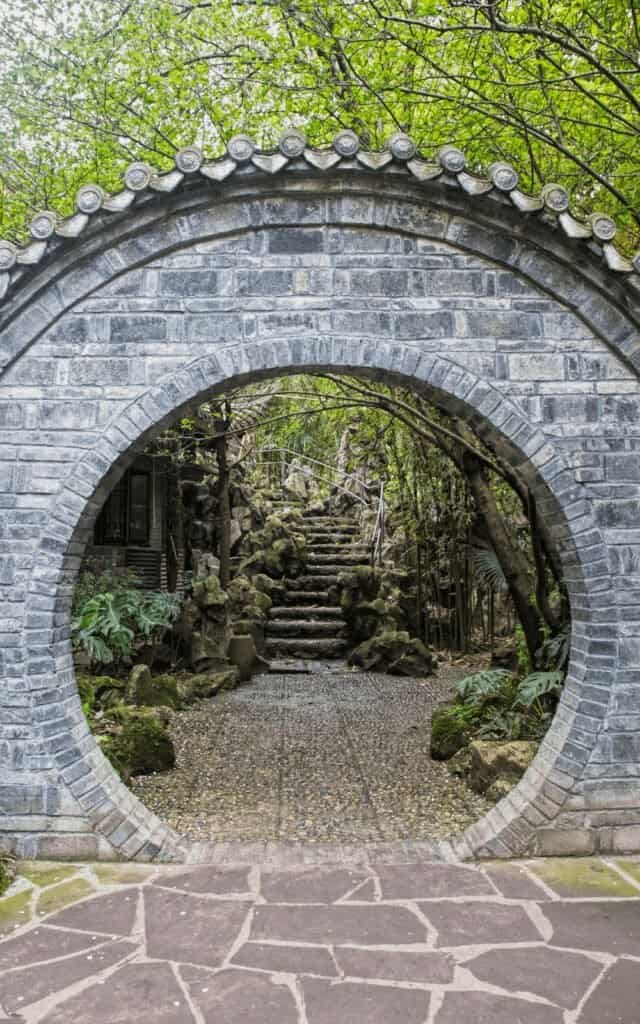
The park also has a bonsai garden, a peaceful lake where you can take a boat ride, and plenty of people simply enjoying a slow morning.
If you’re there on a weekend, you might stumble upon the famous Marriage Market, where parents advertise their kids in hopes of finding the perfect match
2. Wenshu Monastery
Ⓜ️ Subway Instruction: metro line 2 from People’s Park Subway station to Tianfu Square. At Tianfu Square, change line 1 to Wenshu Monastery. It will take 16 minutes. You can also take a 30-minute walk from People’s Park to Wenshu Monastery.
Wenshu Monastery is one of those places in Chengdu where time seems to slow down. Originally built during the Tang Dynasty and later restored in the Qing era, it’s a peaceful le filled with incense-scented air, chanting monks, and gardens.
It’s still an active place of worship ( for this reason, there’s no entrance fee), not just a tourist site — you’ll see locals burning incense and praying in silence.

The monastery is also the largest and best-preserved in Chengdu, home to over 300 Buddha statues, including a famous Jade Buddha brought from Myanmar.
Right next door, you’ll find a teahouse and a vegetarian restaurant — a rarity in China. I definitely recommend stopping by for lunch. It’s the definition of a calming, local experience that pairs perfectly with the monastery’s spirituality.
3. Wuhou Shrine
Ⓜ️ Subway Instructions: Take subway line 1 from Wenshu Monastery to Sichuan Gymnasium. Then, change to subway line 3 to Gaoshengqiao. Finally, walk about 1.1km to Wuhou Memorial Temple.
The Wuhou Memorial Temple is a must-visit for those interested in Chinese history. Built in the 6th century, it’s dedicated to Zhuge Liang — the legendary military strategist, politician, and astronomer from the Three Kingdoms period.


The entire complex is a tribute to the Shu Kingdom, featuring preserved temples, calligraphy, and statues that tell the stories of the past. You’ll walk through the Temple of Liu Bei, the Temple of Zhuge Liang, the Sanyi Temple, and even come across the Tomb of Liu Bei on the west side.
Entrance costs around ¥50 (you can purchase tickets on site), and in my opinion, it’s absolutely worth it, especially if you want to feel like you’ve stepped into ancient China.
4. Evening at Kuanzhai Alley or Jin Li Street
Late afternoon and early evening are ideal for a stroll through the old soul of Chengdu. Kuanzhai Alley and Jinli Street are the options when it comes to exploring typical narrow alleyways and quirky shops.
Kuanzhai Alley is made up of three parallel lanes: Kuan (Wide), Zhai (Narrow), and Jing (Well). Each offers a different feel, but everywhere you’ll find Qing Dynasty architecture, teahouses, boutique shops, and a few more modern cafés in between. It’s perfect for an afternoon stroll. Here, you’ll find many street food stalls where you can grab some spicy skewers, or stop by hidden courtyards, and even stumble upon an art gallery or two.


Jinli Street, on the other hand, comes alive at night. It’s one of those typical and charming cobbled paths lying under rows of red lanterns, traditional-style buildings, and nonstop street food. It’s more touristy as it has that “classic China” postcard vibe.
You’ll find stalls selling everything from tanghulu (those candied fruit skewers) to spicy everything.
Here you’ll find many dinner spots, including hot pot. Some of the most famous nearby are Shu Jiu Xiang or Huangcheng Laoma — don’t forget you can always ask for a non-spicy broth!
Day 2: Pandas, Museums & Sichuan Opera
5. Research Base of Giant Panda Breeding
🚕 How to Get There: The best way to arrive at the Research base is by taxi. It will only take 15 minutes.
Your second day in Chengdu is the perfect time for the highlight of the city: the Chengdu Research Base of Giant Panda Breeding. Ideally, you would go early in the morning— ideally right when it opens (usually around 7:30 or 8 a.m., depending on the season).
That’s when the pandas are most active, especially during feeding time. It’s the best chance to catch them climbing trees, munching on bamboo, or just being their adorable.

The base is about 13 km from downtown, and a taxi will get you there in around 15 minutes. The site is big but well-organized, with clear paths leading you through various enclosures. You’ll see giant pandas of all ages, from tiny baby pandas in the nursery to full-grown ones lounging around.
My favorite part was spotting red pandas jumping through the trees above my head while exploring the site.
You can easily spend 2–3 hours here, and honestly, we ended up staying half a day and grabbing lunch inside the park. It’s a mix of animal encounters and a stroll through bamboo forests and lakes. Make sure to book your tickets in advance to avoid the queues.
6. Jinsha Site Museum
🚕 How to Get There: I suggest you plan a taxi directly from the Research Base of Giant Panda Breeding to the Jinsha Museum. It will only take 17 minutes.
If you’re even slightly into history or ancient civilizations, the Jinsha Site Museum is one of those places that might surprise you. I didn’t expect to love it, but I was blown away by the gold masks and intricate jade pieces — some over 3,000 years old.
The museum is built around an actual archaeological site, discovered in the early 2000s, which uncovered a whole new chapter of the ancient Shu Kingdom, previously unknown to historians.
It’s modern, well laid out, and surrounded by a peaceful park that makes the whole experience even more enjoyable. If you’ve got an extra half-day in your Chengdu itinerary, it’s definitely worth a visit — especially if you want a break from the usual tourist spots.
7. Anshun Bridge
One of my favorite memories from Chengdu was our final night, wandering along the Jinjiang River and coming across the glowing Anshun Bridge.
It’s one of those places that instantly catches your eye — illuminated, with a traditional-style restaurant sitting right on top of the bridge, reflecting onto the water below.

Even Marco Polo mentioned this bridge in his travels, and seeing it lit up at night, you understand why. If you’re looking for a perfect evening walk or photo spot in Chengdu, this is it.
9. Sichuan Opera
The Sichuan Opera show was, to me, the most immersive cultural experience in Chengdu. We have been to the Shufengyayun Opera House, and it’s truly the best place to see it. This vibrant art form, dating back to the late Ming and early Qing dynasties, is a mix of tradition, drama, comedy, and pure entertainment in one unforgettable performance.
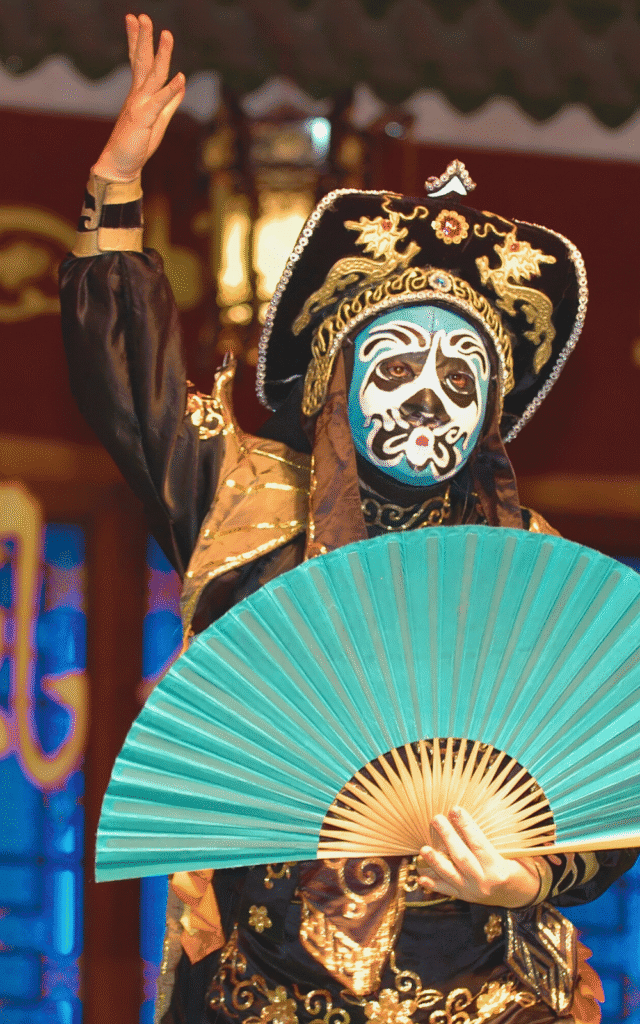
The highlight is the face-changing act. Performers, dressed in elaborate traditional costumes, move with such precision and speed that they seem to magically swap painted masks in the blink of an eye — it’s mind-blowing to watch live.
The show also includes fire-breathing, acrobatics, folk music, storytelling, vivid colors, and striking visuals. Even if you don’t understand a word of Chinese, the energy and performances speak for themselves.
Day 3: Day Trip to Leshan Giant Buddha
If you’re visiting Chengdu, the Leshan Giant Buddha is not only the easiest day trip — it’s also the most impressive.
Carved into a cliff face and standing 71 meters tall, it’s the tallest stone Buddha in the world. Located just across the river from Mount Emei, the entire area is part of a UNESCO World Heritage Site.
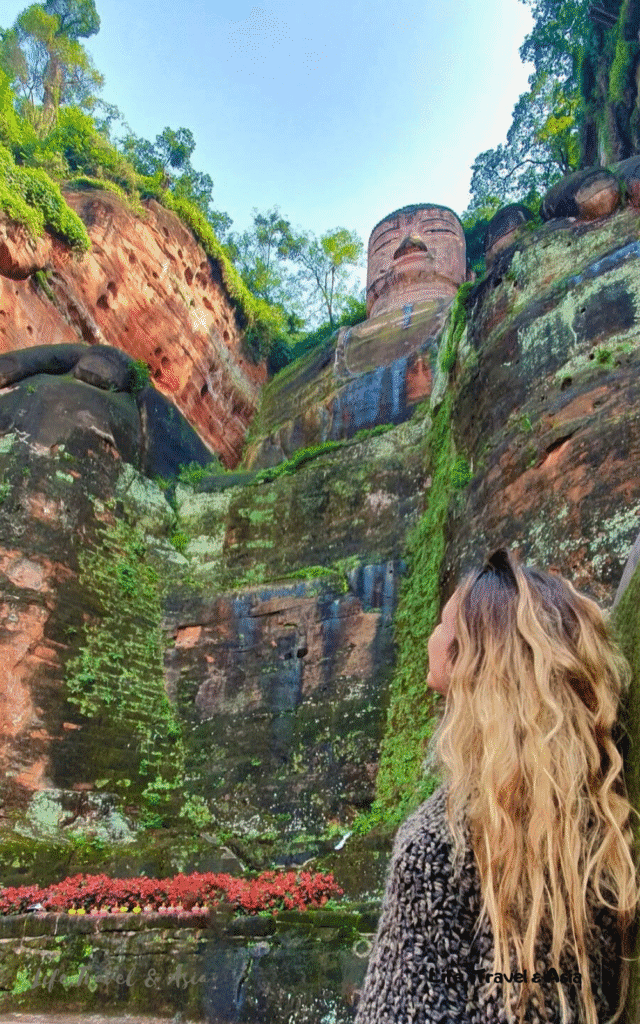
While the giant statue is the main highlight, the surrounding complex, including the Oriental Buddha Park and Lingyun Temple, offers a quieter, more spiritual experience once you move beyond the main crowds.
If you’re thinking about organizing a DIY trip to Leshan, here’s my complete guide with tips on how to get there, what to see, and everything you need to plan your visit. If you’d rather skip the logistics and enjoy the insight of a local guide, this tour is a great option.
Things To Do Around Chengdu
If you have a few extra days in the area, there are some stunning natural spots worth exploring (marked in yellow on the map).
Mount Emei Scenic Area: If you’re already visiting Leshan to see the Giant Buddha, it’s worth extending your trip with a day at Mount Emei Scenic Area — one of China’s most sacred Buddhist mountains and a breathtaking natural escape. You’ll need an extra day, but it’s worth it for the misty forests, cliffside temples, and the famous Sea of Clouds.
Mount Qingcheng Scenic Area: Mount Qingcheng is quieter than Mount Emei and rich in Taoist history. Here you’ll find lush forests and ancient Taoist temples. It’s easy to reach: just take a high-speed train from Chengdu’s Xipu Station to Qingchengshan Station (about 1 hour), then hop on a short bus or taxi to the entrance.
Dujiangyan Irrigation System: A day trip from Chengdu to the Dujiangyan Irrigation System is a fantastic way to experience history and nature! It’s an ancient engineering masterpiece, built in 256 BC, that still functions today. To get there, you can take a direct train from Chengdu to Dujiangyan, which takes about an hour.
Jiuzhaigou Valley: Jiuzhaigou Valley is one of China’s most breathtaking natural reserves, famous for its turquoise lakes, waterfalls, and colorful forests that change with the seasons. Located in northern Sichuan, it’s pretty remote and not as easy to reach. You can reach Jiuzhaigou by taking a train from Chengdu East to Jiuzhai Huanglong and then a bus to the scenic area. Alternatively, you can book a private tour with transport.
…And After Chengdu?
If you’re looking to continue your China itinerary after Chengdu, there are great cities you can add to your trip.
The closest big city is Chongqing, just 1.5 hours away by high-speed train. Known for its ultra-spicy food, glowing skyline, and vibrant atmosphere, it’s perfect for a short 1–2 day visit.
Heading north, you’ll find Xi’an, about 3–4 hours by train, home to the famous Terracotta Warriors and rich historical sites — ideal for a 2-day stop.
For a longer trip, Kunming is about 6 hours away by high-speed train, and from there you can easily explore the Yunnan Province, one of the most culturally and naturally diverse regions in China.
If, on the contrary, you prefer to explore the south of China, Guilin, with its karst peaks landscape, is around 7 hours by high-speed train. From there, you’ll easily reach cities like Guangzhou, Hong Kong, and Macao.
And that’s a wrap! Three days is the perfect amount of time to experience Chengdu — from pandas to lantern-lit streets and temples.
Of course, the surrounding region deserves way more love: with snow-peaked mountains, sacred Buddhist sites, and Taoist temples, Sichuan is one of the most naturally stunning provinces in all of China. If you have extra time, I highly recommend extending your trip — and if you do, let me know how it goes!
Have you been to Chengdu already, or are you dreaming about your future adventure? Comment with your thoughts, questions, or plans below — I’d love to hear all about it! 🐼
Did you find it helpful? 📌 Pinning is caring!

DISCLAIMER: This travel itinerary is purely based on my experiences during my trip and is meant to inspire and provide advice for your adventure. Feel free to adapt it to your preferences—there is no need to follow it in detail. All prices, transport options, and instructions mentioned reflect my personal experiences at the time of writing and may have changed since. You must double-check all the details before your trip to ensure accuracy. All opinions and recommendations are my own, rooted in my unique journey through China

